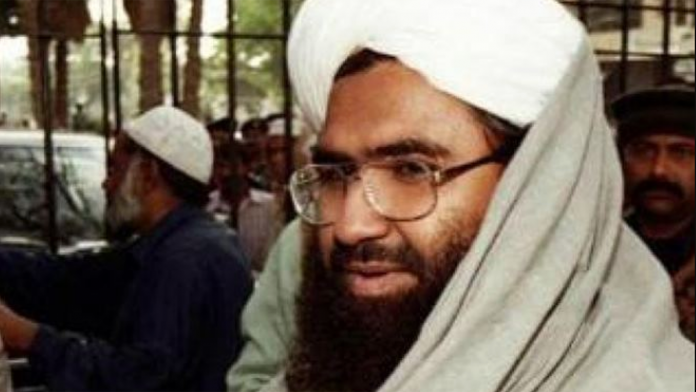
Despite snub on Masood Azhar issue, India can't dare China

That China again chose to tilt towards Pakistan on the issue of declaring Jaish-e-Mohammed chief Masood Azhar a terrorist is clearly an assertion that Beijing considers Islamabad a friend though that does not necessarily mean it sees New Delhi as a rival.
While one question could be how easy was it for China to take the call considering that it has a robust trade and diplomatic relationship with India, the other issue is the response of New Delhi to Beijing’s preference for Pakistan.
For an Indian, it is tempting to imagine their country to be on par with China and consequently expect a reaction that would bring Beijing some grief for its pro-Pakistan tilt. But this is the third time (the earlier attempts were in 2009 and 2016) that China has rebuffed India’s efforts to get Azhar blacklisted at the UNSC.
And India on none of these occasions has responded in any substantive manner other than expressing dismay. This time too, it is inconceivable that the Modi government will do anything other than articulate verbal disappointment.
What this indicates is that China does not fear Indian retribution, if at all. Also, Beijing is confident it can ride any diplomatic protests that New Delhi may lodge at China’s obduracy when it comes to Masood Azhar.
China is miles ahead of India in most conceivable parameters including social and economic. Where India scores is democracy and the various constitutionally guaranteed freedoms but that does not have much impact in international realpolitik other than place India on a moral high ground.
Let’s not forget that China is politically among the top five countries in the world, all of whom occupy powerful permanent positions at the UNSC with the ability to control the global narrative.
If this were not enough, economically China has gone way beyond India in building a superstructure that has pushed it into the realm of a superpower. The balance of trade between the two countries favours China and India is no position to take punitive action that could end up hurting itself. A veritable example of cutting the nose to spite the face.
According to official data, India’s trade deficit with China spiked from $16 billion in 2007-08 to $51 billion in 2016-17, that is over 200 percent. India’s imports to the tune of $61 billion from China were six times its exports amounting to $10 billion in fiscal 2016-17.
Militarily too, India is no match for China either in conventional or nuclear armoury. According to reports, China has 653 modern combat aircraft to India’s 349. As for major surface combat vessels, India has 28 to China’s 79 while in the area of submarines India has 14 to China’s 79. While India after years of struggling to build a fighter aircraft has come up with the light combat aircraft, China is already building a fifth generation fighter jet besides an aircraft carrier reportedly bigger than anything India has.
The June 2017 incident at Doklam made it clear who was the boss in the relationship. India threatened and moved its troops in the border Doklam area to confront Chinese troops who had positioned themselves uncomfortably close to the triangle that intersects India, China and Bhutan.
After around 70 days, India backed off. The Chinese troops, which had been building some structures that had triggered India’s response, are reported to be in more or less the same position even if their construction stopped. The resulting tension at the time was real and there were concerns that nothing untoward should happen between the two armies, even if inadvertently.
Eventually, after some negotiations, the situation turned to normal. Whether it was a coincidence or not, there was much speculation when Prime Minister Narendra Modi visited Beijing in April 2018 for talks with Chinese president Xi Jinping. Reports suggested that the trip, in the context of Doklam, was placatory in nature and India was keen to douse any remnants of hostility and clear the air between the two countries.
Points of divergence
Besides the Azhar ban issue, there are other points of differences between the two countries that indicate deeper chasms need to be crossed for real camaraderie to happen. For example, India opposes China’s Belt and Road Initiative (relating to trade expansion with developing countries) and has turned down Beijing’s offer to join in it while China is against India’s membership of the Nuclear Suppliers Group.
Politically too, China today challenges India’s long-standing hegemony over the South Asian region and has made inroads into Maldives, Sri Lanka and Nepal at the expense of New Delhi. A veritable tug-of-war continues in the region with India on the defensive and battling hard against China to retain its hold.
Amidst this, where necessary India and China cooperate where their common interests are at stake. Like, for example, in joint bidding for oil exploration in countries of Africa. Clearly, it’s not all black and white. There is a fair amount of grey as well in their bilateral relationship.
So, for those on social media or in drawing room chatter expecting at least India’s sabre-rattling if not meaningful action the predictable conclusion is nothing of that sort is likely to happen and the Azhar ban chapter will be closed, at least for the time being.

